
Plantar fasciitis Therapy
Take the first step towards pain-free living with our specialised treatments
Plantar Fasciitis Therapy
Take the first step towards pain-free living with our specialised treatments
What is Plantar Fasciitis?




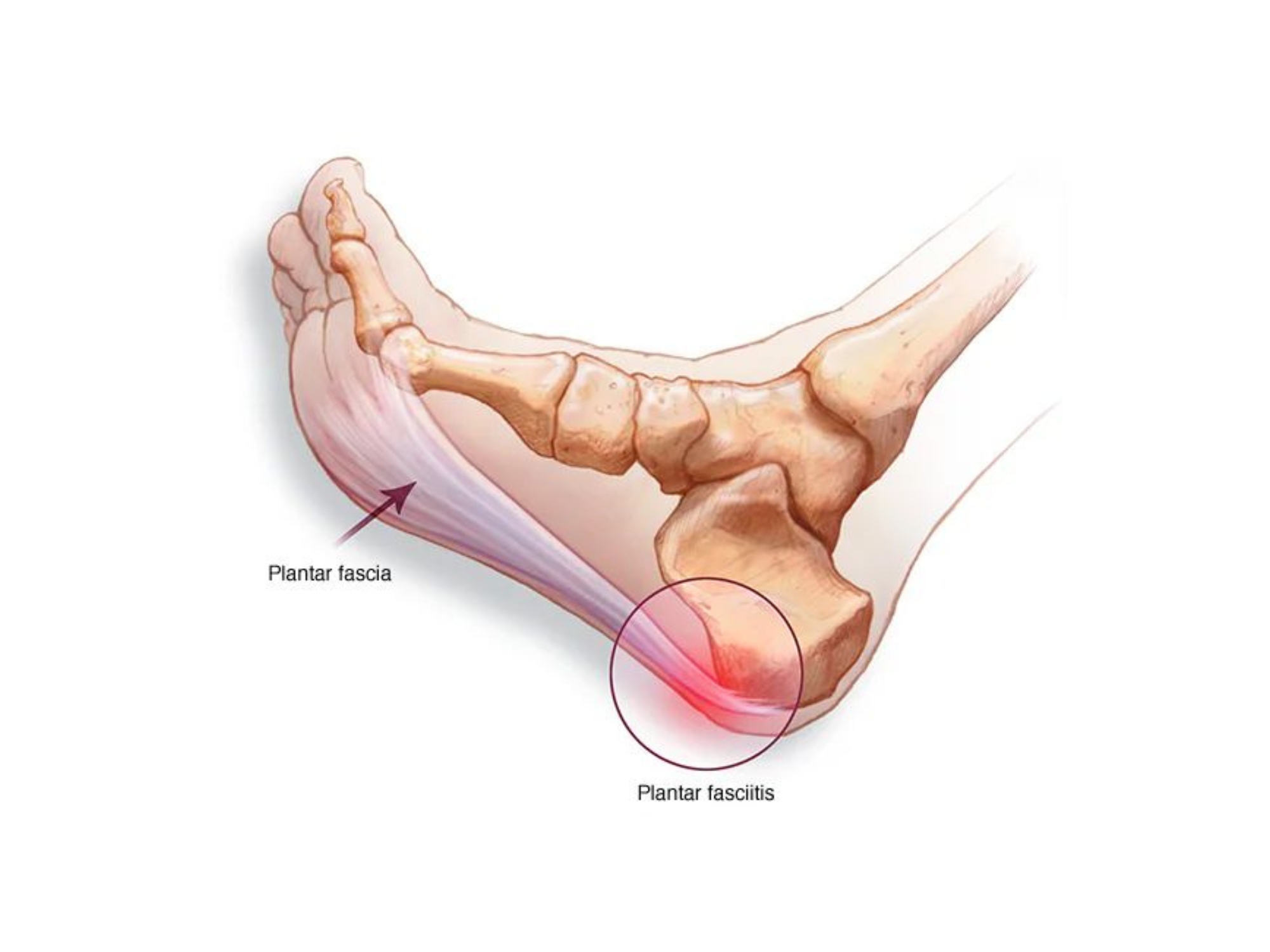
Causes of Plantar Fasciitis
What is Plantar Fasciitis?
Plantar fasciitis is a common condition that causes what can often be described as significant pain in the heel and the bottom of the foot. Affecting many worldwide, it is particularly prevalent among athletes, older adults, and those with certain risk factors. Understanding the intricacies of plantar fasciitis, from its causes and symptoms to diagnosis and treatment options, is crucial for effective management. At UFIT Podiatry, specialised approaches are employed to support patients experiencing this condition.
Plantar fasciitis is the inflammation of the plantar fascia, a thick, fibrous band of tissue that behaves similar to a ligament. It runs across the bottom of the foot, connecting the heel bone to the toes. This tissue supports the arch of the foot and absorbs shock when walking. When the plantar fascia becomes overused, stretched, irritated, or inflamed, it results in the condition known as plantar fasciitis. The inflammation typically causes sharp, stabbing pain in the heel—one of the primary symptoms—especially during the first steps after waking up or after prolonged periods of inactivity. While it most often affects one foot at a time, it is possible to experience plantar fasciitis in both feet simultaneously.
Symptoms of Plantar Fasciitis
The primary symptom of plantar fasciitis is a sharp pain in the heel or along the arch of the foot. This pain is often described as:Stabbing or
Sharp Pain
Particularly intense during the first few steps in the morning or after long periods of rest.
Heel Pain
Usually located at the front bottom of the heel.
Increased Pain After Exercise
While the pain might lessen during physical activity, it often worsens afterward.
Tenderness and Swelling
The heel area may become tender to touch, and mild swelling can occur.
Pain After Standing
Prolonged standing or sitting can exacerbate the discomfort.
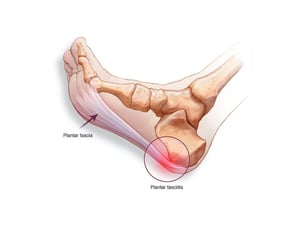

Causes of Plantar Fasciitis
Activities that place a lot of stress on the heel and attached tissue, such as long-distance running or ballet dancing.
Flat feet, high arches, or an abnormal walking pattern can affect weight distribution and increase stress on the plantar fascia.
Plantar fasciitis is most common between the ages of 40 and 60.
Excess body weight increases the load on the plantar fascia.
Jobs that require long periods of standing or walking on hard surfaces can contribute to the condition.
Shoes that lack adequate support or cushioning can exacerbate strain on the plantar fascia.
Overuse
Activities that place a lot of stress on the heel and attached tissue, such as long-distance running or ballet dancing.
Foot Structure
Flat feet, high arches, or an abnormal walking pattern can affect weight distribution and increase stress on the plantar fascia.
Age
Plantar fasciitis is most common between the ages of 40 and 60.
Obesity
Excess body weight increases the load on the plantar fascia.
Occupation
Jobs that require long periods of standing or walking on hard surfaces can contribute to the condition.
Improper Footwear
Shoes that lack adequate support or cushioning can exacerbate strain on the plantar fascia.
Our Approach to Plantar Fasciitis Treatment
At UFIT Podiatry, a comprehensive and personalised approach is adopted to manage plantar fasciitis. The management strategy includes the following:
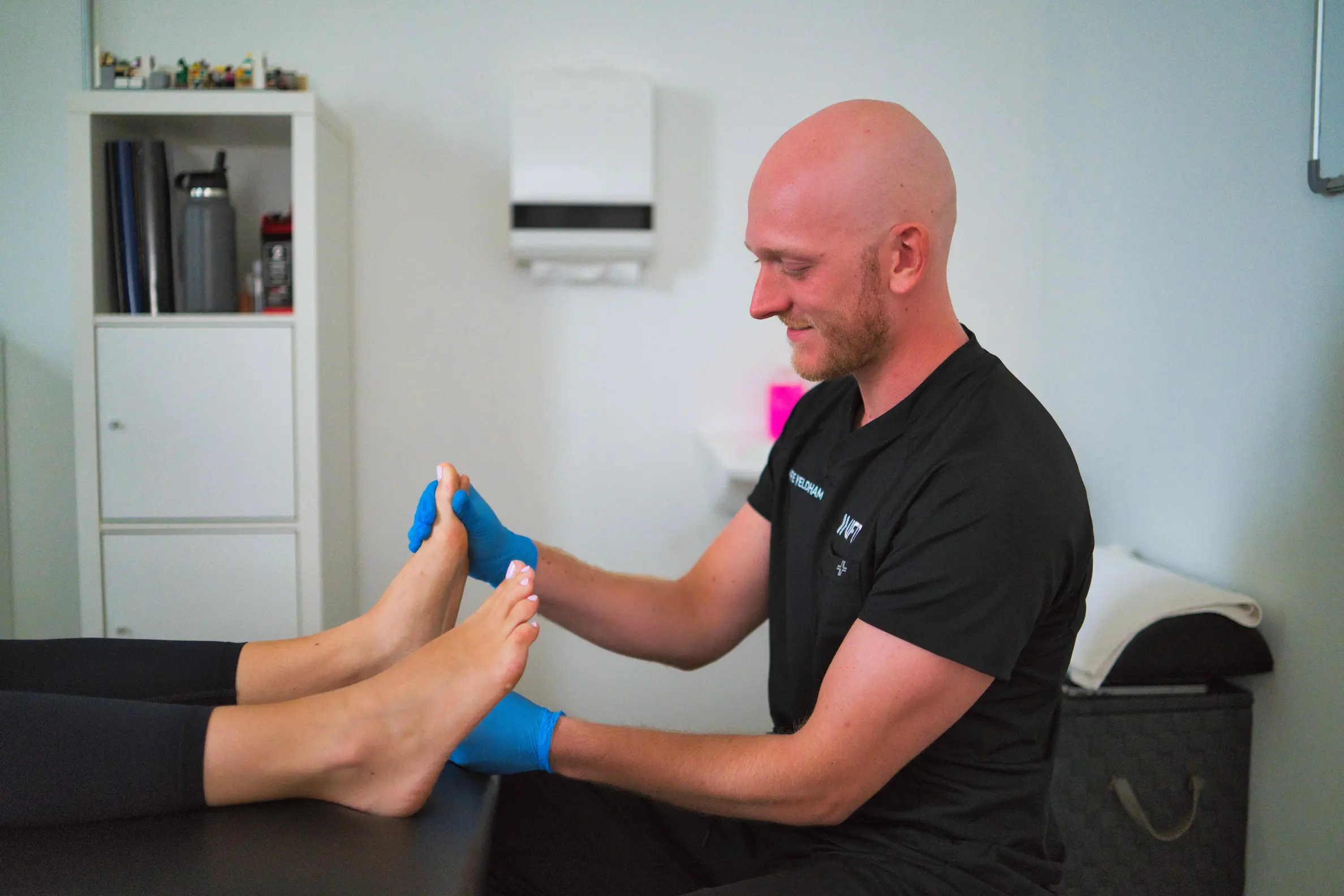
Step 1. Thorough Assessment
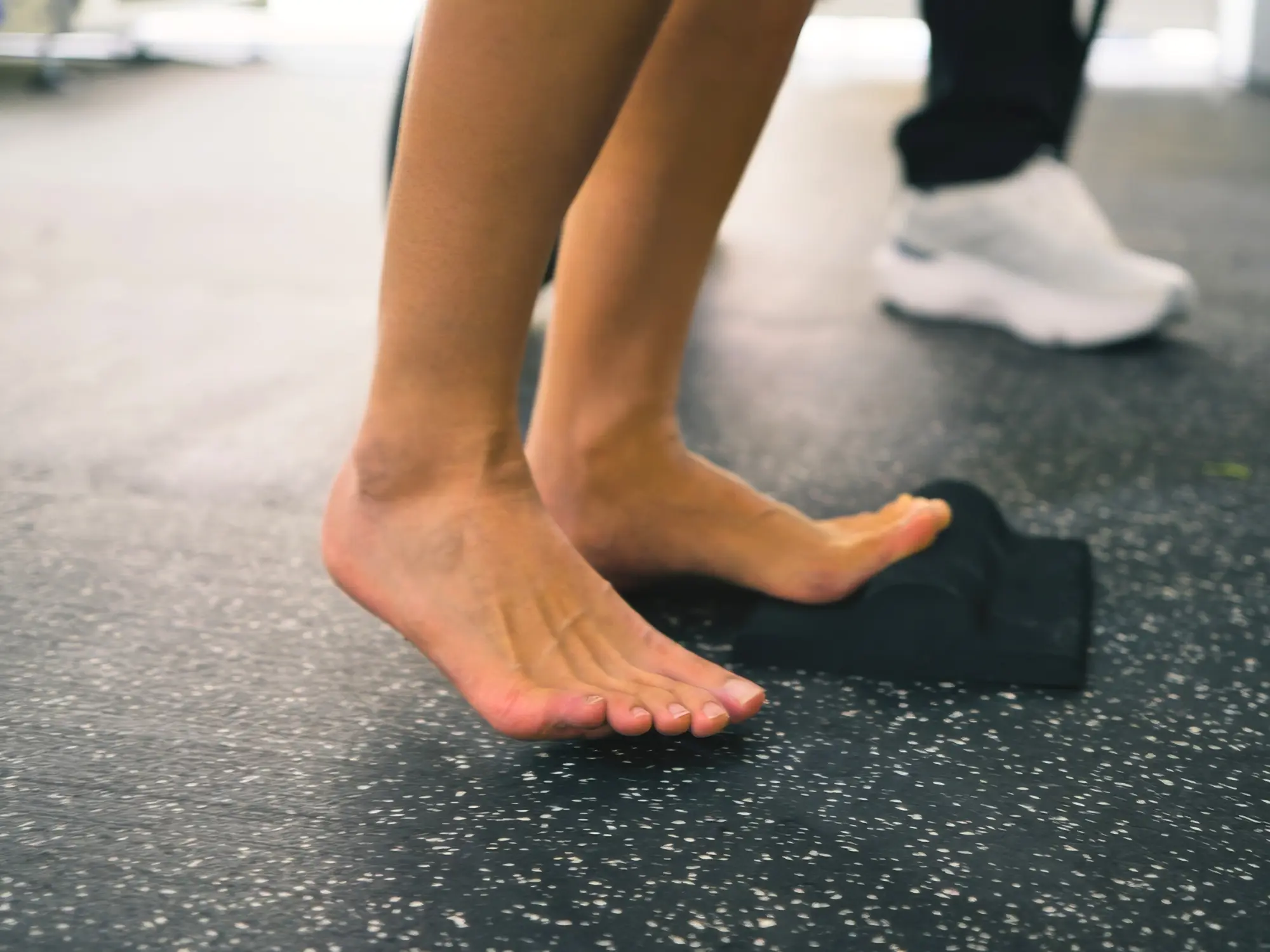
Step 2. Customized Management Plans
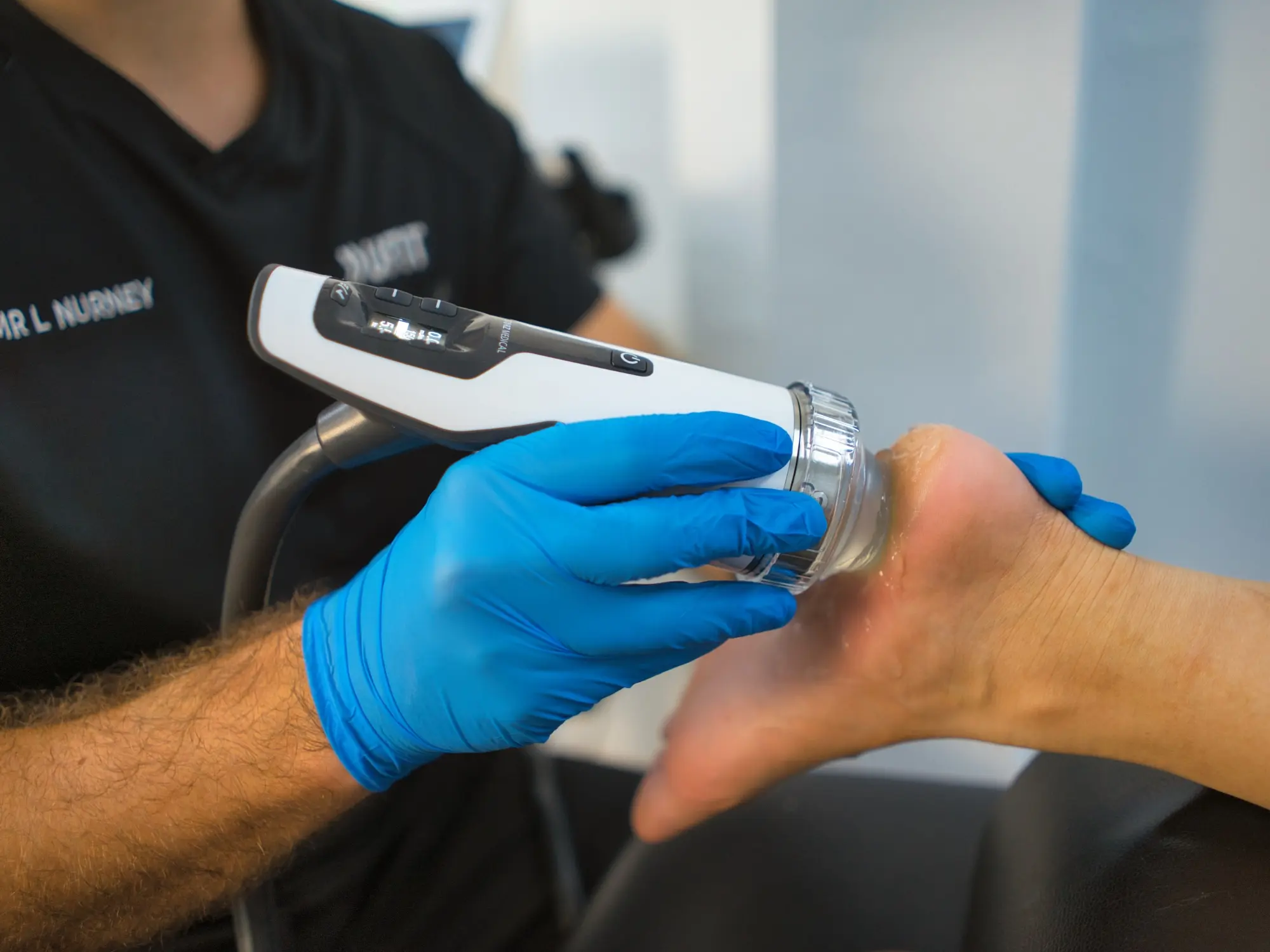
Step 3. Advanced Therapies
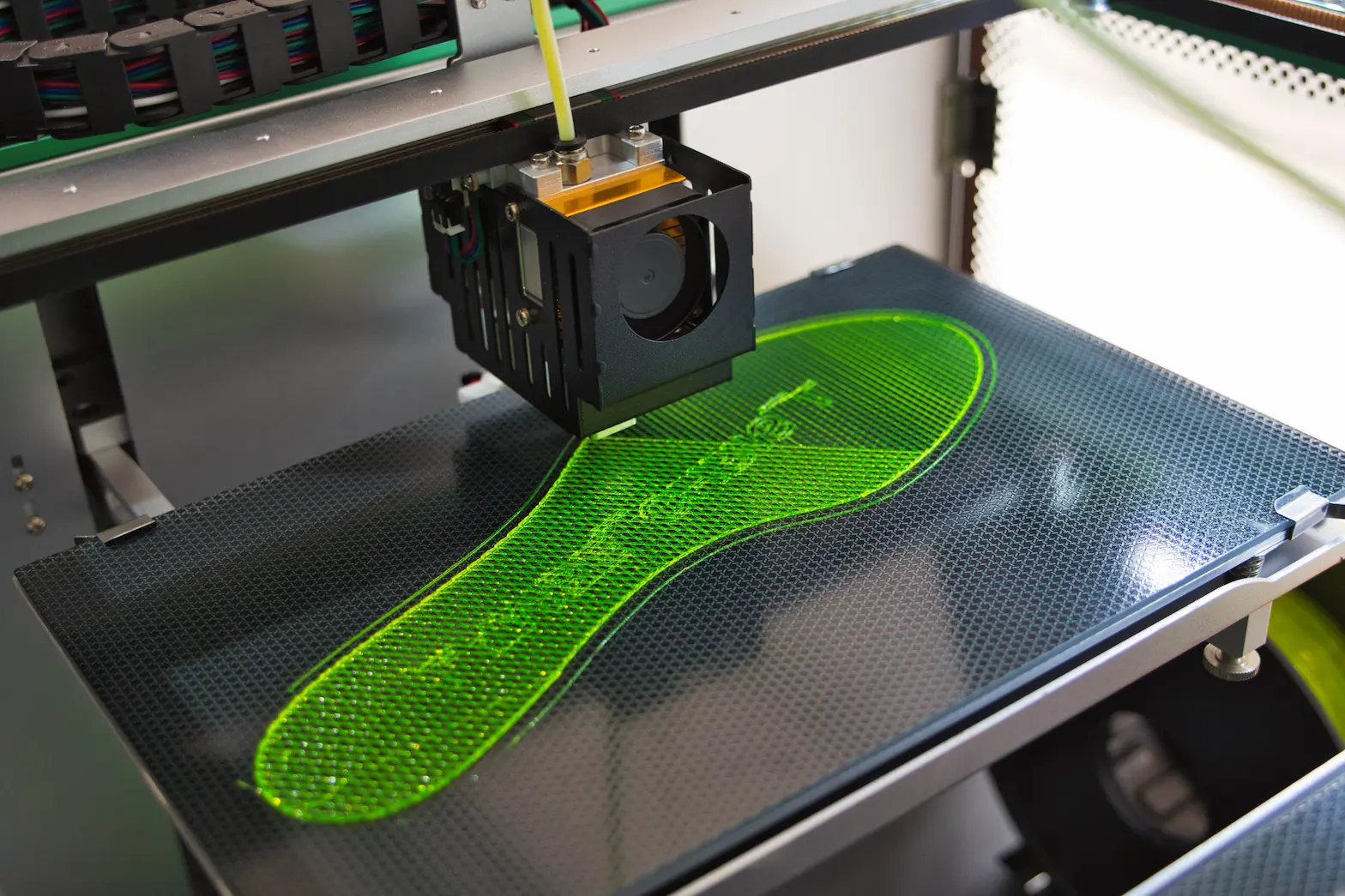
Step 4. Custom Orthotics
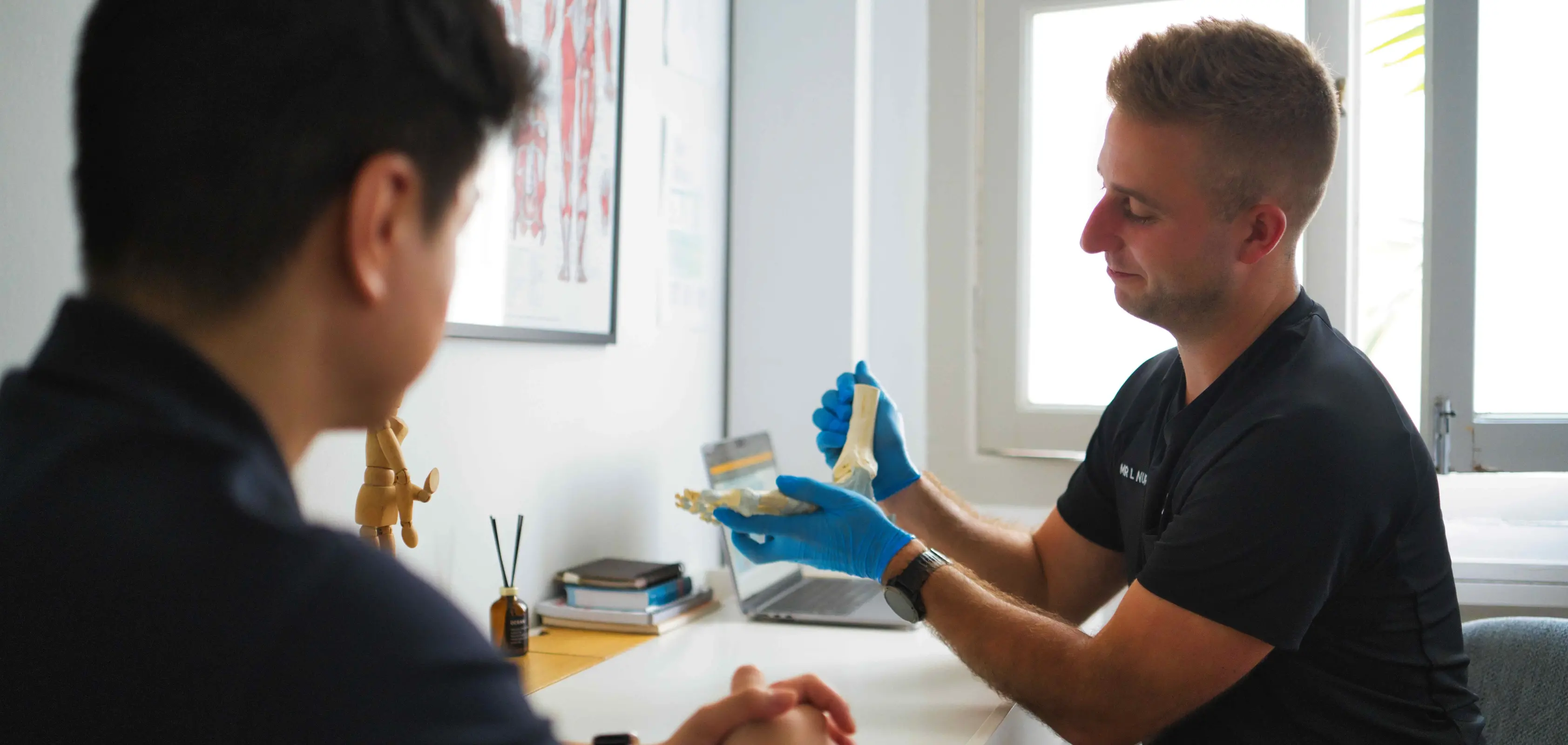
Step 5. Education and Prevention
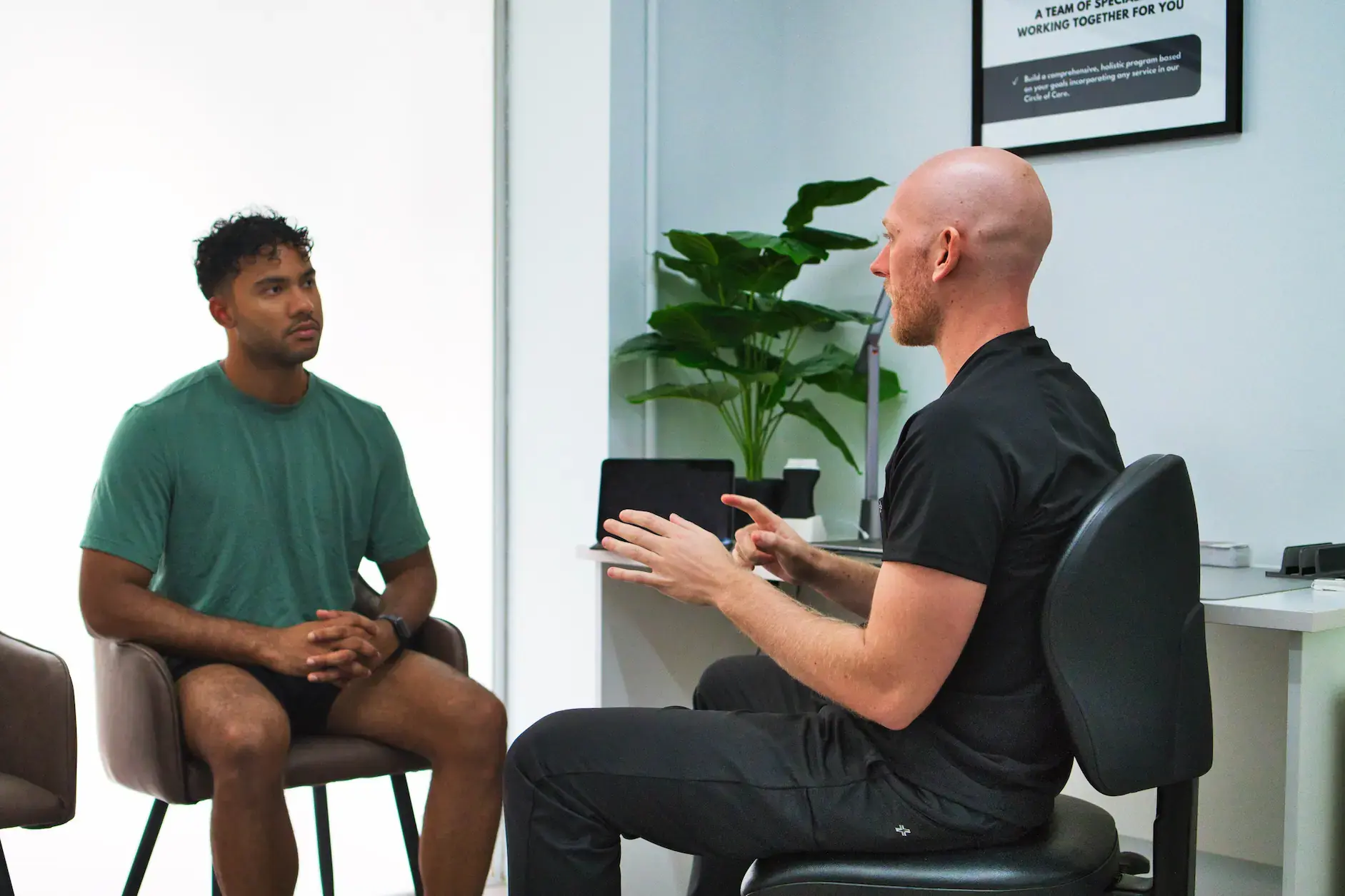
Step 6. Follow-Up Care
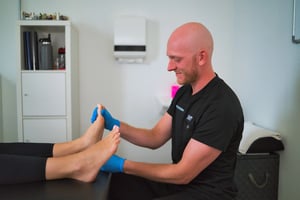
A detailed initial assessment is conducted to understand the patient’s condition, lifestyle, and any contributing factors. This involves a physical examination, gait analysis, and a review of medical history.

Based on the assessment, a tailored management plan is developed. This might include a combination of conservative management methods, physical therapy, and lifestyle modifications.
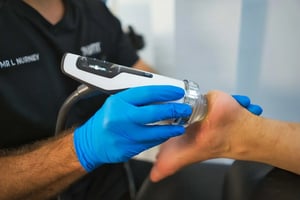
UFIT Podiatry offers advanced therapeutic options such as Radial Shockwave and Focal Shockwave

Patients are educated on proper footwear, stretching exercises, and lifestyle adjustments to prevent recurrence. This proactive approach helps in maintaining foot health and preventing future issues.
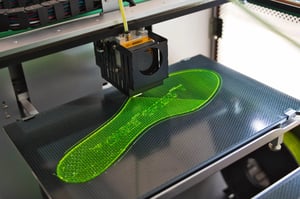
Custom orthotic devices are designed and fitted to provide optimal support and reduce strain on the plantar fascia. These orthotics are created based on precise measurements and tailored to the patient’s specific needs.

Regular follow-up appointments are scheduled to monitor progress, adjust treatment plans as necessary, and ensure long-term recovery and management.

Book online & save $20 off your first consultation
- Personalised, evidence-based care
- Premium, central clinic in the CBD
- Experienced podiatary team
*Terms & Conditions:
- Valid for first time patients who have made prepayment at least 24 hours before the appointment
- Non-cancellable and non-transferable
- Applicable only for initial consultation & can't be used in conjuction with any other offers or promos
Our Approach to Plantar Fasciitis Treatment
At UFIT Podiatry, a comprehensive and personalised approach is adopted to manage plantar fasciitis. The management strategy includes the following:

A detailed initial assessment is conducted to understand the patient’s condition, lifestyle, and any contributing factors. This involves a physical examination, gait analysis, and a review of medical history.

Based on the assessment, a tailored management plan is developed. This might include a combination of conservative management methods, physical therapy, and lifestyle modifications.

UFIT Podiatry offers advanced therapeutic options such as Radial Shockwave and Focal Shockwave

Custom orthotic devices are designed and fitted to provide optimal support and reduce strain on the plantar fascia. These orthotics are created based on precise measurements and tailored to the patient’s specific needs.

Patients are educated on proper footwear, stretching exercises, and lifestyle adjustments to prevent recurrence. This proactive approach helps in maintaining foot health and preventing future issues.

Regular follow-up appointments are scheduled to monitor progress, adjust treatment plans as necessary, and ensure long-term recovery and management.
ALL INDIVIDUALS
ALL INDIVIDUALS
We offer personalized, evidence-based lower limb care for athletes, active individuals, and parents seeking specialized treatment for their children.
We go beyond addressing your injury or pain. Through our Circle of Care, you can access our team of experts with a vast range of specialised experience and knowledge.
What to expect on your first visit
We use cutting-edge diagnostic tools to get real-time insights into your soft tissue, joints and structures to provide a fast and accurate diagnosis.
Post-assessment, you will receive clear and comprehensive reports detailing our findings. This will allow you to make informed decisions on your treatment plan.
Together with you, we formulate a comprehensive and personalised treatment plan that suit your goals and preferences.
Why Choose UFIT’s Podiatry Services?
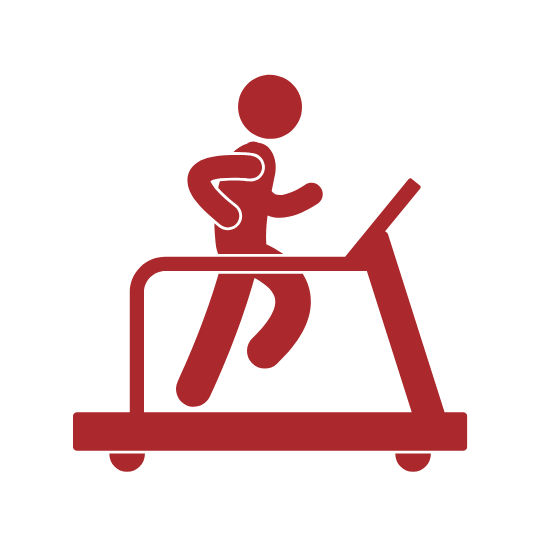
Advanced Technology
As a leading podiatry clinic in Singapore, we stand out by offering advanced gait analysis and in-house 3D-printed insoles, all accompanied by a comprehensive report to provide unparalleled insights into your lower limb biomechanics.

Elite Care for Every Individual
Our podiatry services offer personalised, evidence-based care for a wide range of individuals, including athletes, adults and children. So if you’re experiencing lower limb pain, our expert team can provide comprehensive support to get you back to doing the things you love.

Team of Experts with Optimal Results
We offer more than just solutions for your injury or pain. Through UFIT's integrated Circle of Care, you gain access to our team of expert podiatrists and other healthcare professionals, bringing together a vast range of experience and knowledge to achieve optimal outcomes for your foot and lower limb health.
Plantar Fasciitis Management & Prevention Tips
Use Custom Orthotics or Insoles
Wear Supportive Footwear
Take Frequent Breaks
Perform Calf & Achilles Tendon Stretches
Maintain a Healthy Weight
Physical Therapy for Foot Strengthening
Use Custom Orthotics or Insoles
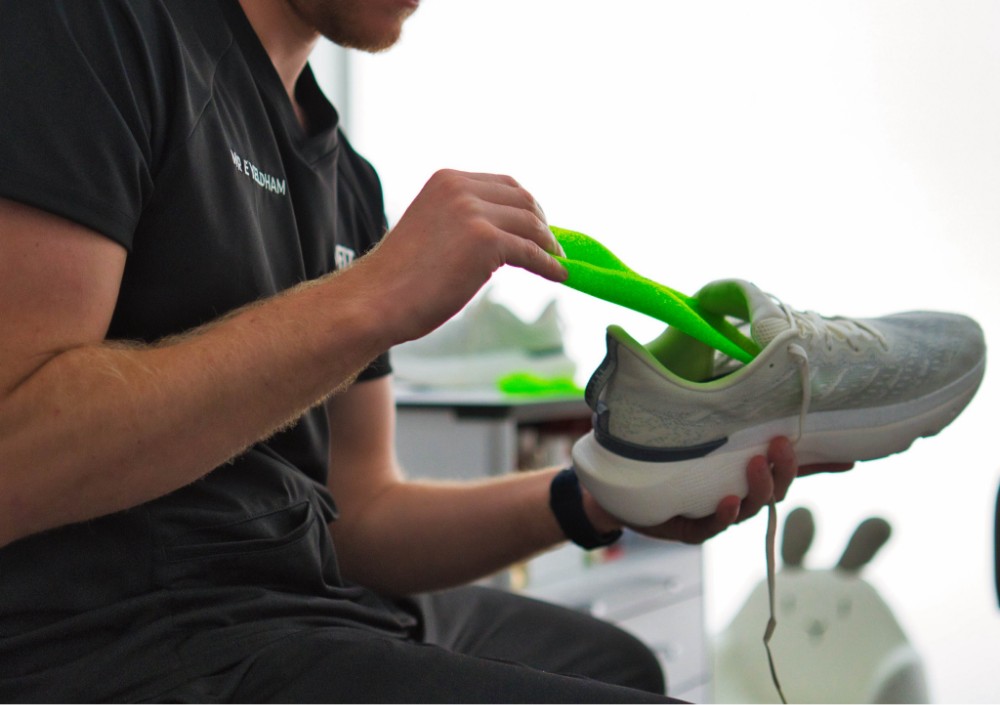
Orthotic inserts can provide additional arch support and cushioning. While over-the-counter options exist, custom orthotics insoles, designed by a podiatrist based on your specific foot structure, offer tailored support. They work by helping to distribute pressure more evenly across your foot, reducing strain on the plantar fascia with every step.


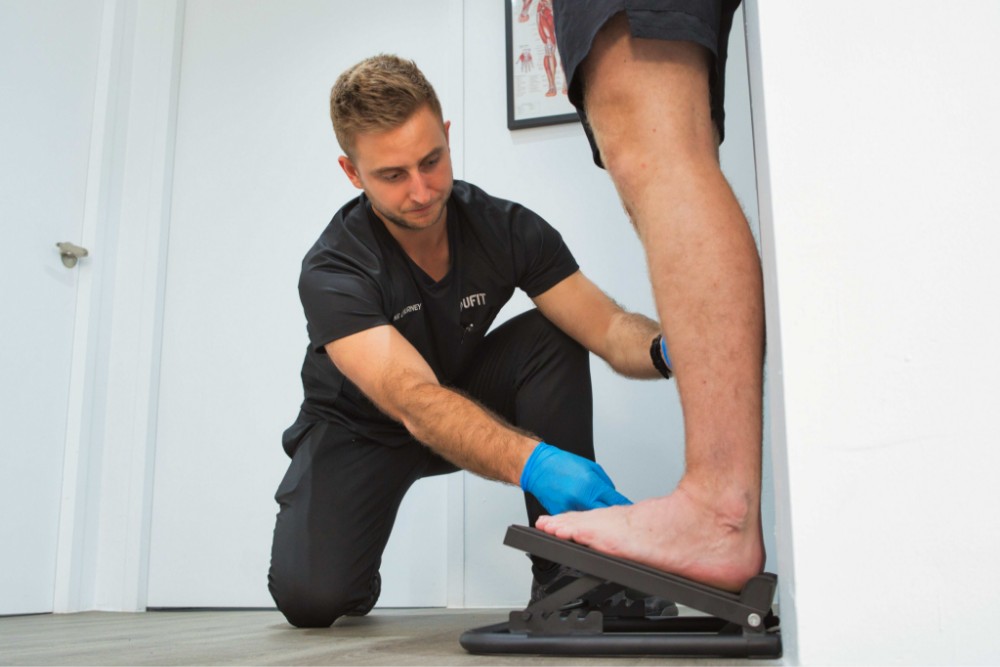

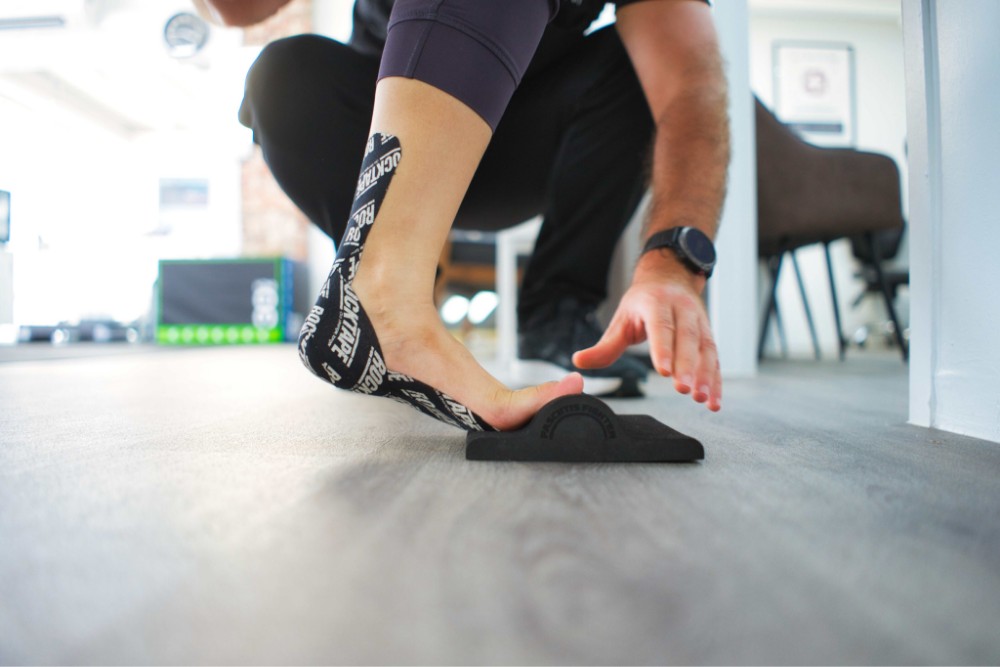
Hear from our Clients
⭐⭐⭐⭐⭐
“I recently had an appointment with podiatrist Lewis Nurney at UFIT, and it was a wonderful experience. I’ve been dealing with a long-standing issue, but with Lewis’s expertise, kindness, and patience in listening to my concerns, I’ve finally been able to solve the problem and feel so much better.
The clinic is modern with high-tech equipment, and Lewis explained everything clearly, making me feel confident in the treatment plan. Now I’m feeling ready and prepared for the 10K Standard Chartered Marathon! If you’re looking for expert podiatry care, I highly recommend Lewis and t
⭐⭐⭐⭐⭐
“Came back to UFIT today after a year since my last consultation with Lewis Nurney. I was very relieved to know that my Achilles issues can be fixed with Lewis’s great advice. He would show me how to perform rehab exercises that will be able to help me throughout my recovery. I highly recommend UFIT podiatry to anyone in need of advice or help.”
⭐⭐⭐⭐⭐
“I had the pleasure of visiting Dr. Lewis through a recommendation and it turned out to be an excellent one, particularly after experiencing so many already. The thoroughness of his examination and help at each step of the process is beyond impressive. He took the time to listen to all my concerns and thoroughly explained my diagnosis and treatment options.
He made sure that I was well-informed and comfortable with the decisions being made without any pushing. I would highly recommend him for anyone in need of a skilled and caring podiatrist.”
Use Custom Orthotics or Insoles
Orthotic inserts can provide additional arch support and cushioning. While over-the-counter options exist, custom orthotics insoles, designed by a podiatrist based on your specific foot structure, offer tailored support. They work by helping to distribute pressure more evenly across your foot, reducing strain on the plantar fascia with every step.
Wear Supportive Footwear
Choosing the right shoes is foundational. Look for footwear with good heel cushioning, solid arch support, and a stable structure. Avoid flat shoes lacking support, like many flip-flops, and try to limit walking barefoot, especially on hard surfaces, as this can increase stress on your feet and exacerbate symptoms.
Taking Frequent Breaks
If your job or activities require prolonged standing or walking, or high-impact movements, consciously taking breaks can help. Resting your feet periodically allows the plantar fascia to recover, reducing cumulative stress and potentially preventing flare-ups associated with overuse, a key cause of plantar fasciitis.
Perform Calf & Achilles Tendon Stretches
Maintaining flexibility in your lower leg muscles can influence foot mechanics. Gentle stretching exercises for your calves and Achilles tendon, as guided by your podiatrist or therapist, can help alleviate tension. Regular, appropriate stretching may contribute to managing symptoms as part of your overall therapy plan.
Maintain a Healthy Weight
Carrying excess weight increases the load on your plantar fascia, which is a significant contributing factor among the causes of plantar fasciitis. Managing your weight through a balanced diet and appropriate exercise can lessen this strain, reducing both the severity of symptoms and the risk of developing the condition.
Physical Therapy for Foot Strengthening
A structured exercise program, often guided by a physical therapist or podiatrist, can be very beneficial. Specific exercises aim to strengthen the muscles in your feet and lower legs. This can improve the stability of your foot arch and address biomechanical issues, forming an important part of a comprehensive therapy approach.
Meet Our Podiatry Team

Lewis Nurney
Lewis is a highly experienced podiatrist with over 5 years of practice in Singapore, bringing his expertise to UFIT's comprehensive Circle of Care. As Head of Podiatry at UFIT Club Street, he specialises in sports podiatry, innovative orthotics for adults and children (including 3D-printed custom insoles, Paediatric AFOs and SMOs for pediatric flat feet), and minimally invasive procedures.
A first-class honours graduate from the University of Huddersfield (UK), Lewis holds dual certifications in Extracorporeal Shockwave Therapy (ESWT), Diagnostic Ultrasound and Running Gait analysis. Previously with East Coast Podiatry, he now provides patient-centred care at UFIT, specialising in non-surgical management of conditions like Foot Pain, Plantar Fasciitis and Achilles Tendinopathy in both children and adults, ultimately focused on alleviating discomfort and restoring optimal foot function.

Elliot Yeldham
Elliott is a dedicated podiatrist with over 7 years of healthcare experience, gained in both the UK's National Health Service (NHS) and private practice. He holds an Honours degree in Podiatry from Cardiff Metropolitan University (Wales), and brings a wealth of expertise to Singapore.
Specialising in Musculoskeletal (MSK) podiatry, Elliott's interests include sport podiatry and the management of gait abnormalities in both adults and children. He is also recognised for his skill and patient-focused approach in minimally invasive procedures for ingrown toenails and wart removal. Committed to a patient-centred and multidisciplinary model, Elliott actively stays informed of the latest healthcare advancements through clinical research and international conferences.
Consult A Heel Pain Specialist Today
Visit Our Podiatry Clinic
21 Club St, #01-01
Singapore 069410
+65 6225 5059
podiatry@ufit.com.sg
View on Google Maps
Trusted by Global & Local Podiatry Associations



Frequently Asked Questions about Plantar Fascilitis
Therapy for plantar fasciitis typically involves a multi-faceted approach. Options often include activity modification, targeted stretching and strengthening exercises (physical therapy), supportive footwear advice, custom orthotics, and sometimes advanced treatments like shockwave therapy. Our podiatrists in Singapore will develop a personalised plan based on your specific symptoms and underlying causes.
While some mild cases of plantar fasciitis might see symptoms improve with rest and basic care, it often requires structured management to resolve fully and prevent recurrence. Ignoring the symptoms can lead to chronic issues. Consulting a podiatrist is recommended for an accurate diagnosis and effective therapy plan.
Athletes, particularly runners or those in high-impact sports, can be more susceptible to plantar fasciitis due to repetitive stress, which is one of the common causes. However, it is a very common condition that affects a wide range of people, including those with certain occupations or foot structures.
Yes, foot mechanics, including flat feet (or high arches), can be one of the contributing causes of plantar fasciitis. An altered foot structure can affect how weight is distributed across your foot, potentially increasing strain on the plantar fascia. However, many people with flat feet never develop the condition.
Plantar fasciitis is most common between the ages of 40 and 60. While age can be a factor (often due to changes in tissue elasticity or cumulative stress), the condition doesn't necessarily worsen solely because of age. Lifestyle, weight, activity levels, and underlying causes play significant roles.
Physical therapy is a cornerstone of many plantar fasciitis management plans. It typically focuses on specific stretches to improve flexibility in the calf and plantar fascia, and exercises to strengthen foot muscles. This approach aims to address biomechanical causes and alleviate symptoms, often yielding positive results.
Custom orthotics are often beneficial in managing plantar fasciitis. They are designed to support your specific foot structure, improve alignment, and reduce excessive strain on the plantar fascia. As part of a comprehensive therapy plan, they can help alleviate symptoms and prevent future issues.
Surgery is rarely required for plantar fasciitis. The vast majority of cases respond well to conservative therapy approaches like physical therapy, orthotics, and lifestyle changes. Surgery is typically only considered as a last resort for persistent, severe cases that haven't improved with other treatments.
Minimising the recurrence of Plantar Fascilitis involves addressing the initial causes. Key strategies include wearing supportive footwear, maintaining a healthy weight, regularly performing recommended stretches, avoiding sudden increases in activity intensity, and using orthotics if advised. Being mindful of early symptoms and seeking advice promptly can also help.
If left untreated, plantar fasciitis can lead to chronic heel pain, which can significantly impact daily activities and quality of life. It may also cause you to change your walking pattern (gait) to avoid pain, potentially leading to secondary issues in your feet, knees, hips, or back.
Podiatry Blog
Check out the podiatry articles on our blog, written by our very own experts!

.png?width=301&height=187&name=Website%20Navigation%20Images%20(3).png)

-1.jpg?width=1984&height=1196&name=UFIT%20Club%20Street%20Front%20(4)-1.jpg)








